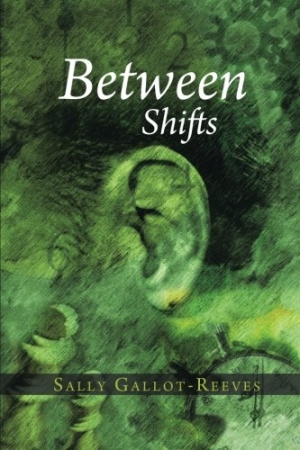Between Shifts
Precise imagery lays bare emotional experiences and observations.
Sally Gallot-Reeves is a poet of witness. In Between Shifts, she uses her writing as a recording device, a way of processing the trauma and healing that often surrounds the passing of a life. Like other poets of witness that have come before her, Gallot-Reeves employs what Carolyn Forché so aptly describes as “Poem as trace, poem as evidence.”
Written over a period of thirty years and often inspired by her career as a nurse, many of Gallot-Reeves’s poems take place in a hospital setting. Often, the scenes describe the very last moments of life. Although some of her images are precise and crystalline, the power of these poems is in their narratives. Her writing resembles a magnifying glass placed over an object so as to explore its porous spaces. It is cathartic and appears to be a way to soothe and sort experience.
Gallot-Reeves’s poems are peppered with beautiful imagery and music; on occasion, however, an extra phrase pulls away from the depth of the preceding language. The poem “dormancy” begins with: “winter stillness freezes forms / against a dullened sky, blackened branches / outstretched and upward supplication / in icy windswept vacancy, / lashed with snowflakes / in flurries of tears.” The language is almost staccato in its clarity, and it replicates the icy landscape she is describing, but the last line, “in flurries of tears,” veers away from the cutting language and adds a gratuitous moment of emotion, detracting from the image. If left alone, the landscape “lashed with snowflakes” would have elicited an emotional response on its own.
At another point in the book, the poem “self abandonment” perfects this balance between image and emotion. In the last two stanzas, Gallot-Reeves writes, “It could be over. / Let me rip away the layers of adhesive tape / securing all the jagged edges / of your life. // Open up the chasm / where it bleeds. / For a moment / SCREAM / then let the night air / form its healing scab / inside out.” In this example, she leads up to an arresting image and leaves the poem open and raw. This lets each reader place their own emotion onto the piece.
The cover art for Between Shifts is dreamlike and effective, drawing from the images of the poems themselves. Unfortunately, the power of Gallot-Reeves’s language is distracted from by the eclectic black-and-white photos scattered throughout the book. They draw the attention and imagination away from the carefully crafted writing.
Often drawing on natural images, Gallot-Reeves’s poems are moist and earthy and feel very real. With Between Shifts she is able to hold the concrete and the ethereal in one palm. This juxtaposition and her strength as a writer are encapsulated in her poem “preserves” when she writes, “Sweet vapors meandering through dampened hair / adrift on currents with the August breeze. / I am a good woman in this house. / I could float away.”
Reviewed by
Colby Cedar Smith
Disclosure: This article is not an endorsement, but a review. The publisher of this book provided free copies of the book and paid a small fee to have their book reviewed by a professional reviewer. Foreword Reviews and Clarion Reviews make no guarantee that the publisher will receive a positive review. Foreword Magazine, Inc. is disclosing this in accordance with the Federal Trade Commission’s 16 CFR, Part 255.

